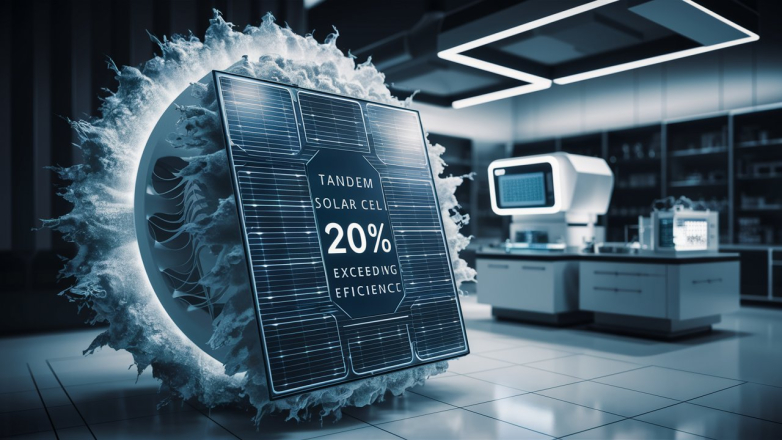‘Tandem Solar Cell with Antimony Selenide Achieves Over 20% Efficiency’

A recent breakthrough in solar energy technology has resulted in a tandem solar cell with an efficiency exceeding 20%. Researchers achieved this milestone by using antimony selenide as the bottom cell material and a wide-bandgap organic-inorganic hybrid perovskite material as the top cell material. This innovation, highlighted in a study published in Energy Materials and Devices, showcases the potential of antimony selenide in tandem solar cells.
Tandem solar cells, which stack different solar cell materials on top of each other, are more efficient at converting sunlight into electricity compared to single-junction solar cells. The research team optimized the antimony selenide bottom cell and introduced a transparent conducting electrode to enhance spectral response, resulting in a power conversion efficiency of over 20%. They are now focused on further improving device performance and exploring the possibilities of antimony selenide in two-terminal tandem solar cells.
The use of antimony selenide as the bottom cell material and a wide-bandgap organic-inorganic hybrid perovskite material as the top cell material allowed researchers to achieve exceptional efficiency in tandem solar cells. By stacking these materials and optimizing their properties, the team surpassed the 20% efficiency threshold. Moving forward, they aim to continue advancing their technology to unlock even greater potential in solar energy generation.
For more information on solar energy technology and related services, visit the Solar Directory to connect with leading solar installers and manufacturers in the industry.





